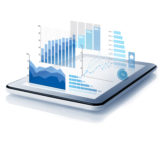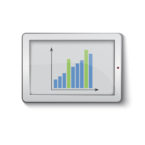Hospitality
Filter By
Browse By
- SAP Analytics and AI
- SAP Application Development and Integration
- All SAP Application Development and Integration
- SAP ABAP
- SAP ABAP Development Tools
- SAP ABAP Test Cockpit
- SAP API Management
- SAP BAPI
- SAP Basis
- SAP BRF
- SAP Business Application Studio
- SAP CMS
- SAP Design Studio
- SAP Development Tools
- SAP DevOps
- SAP EAI
- SAP EDI
- SAP Extension Suite
- SAP Fiori
- SAP Fiori Elements
- SAP Integration Suite
- SAP Low Code Application Development
- SAP Low Code Automation
- SAP Netweaver
- SAP Release Management
- SAP UI5
- SAP Web Application Server
- SAP Web IDE
- SAP Business Process Management
- SAP Center of Excellence
- SAP CIO
- SAP Customer Experience
- SAP Data and Data Management
- All SAP Data and Data Management
- SAP BW
- SAP BW/4HANA
- SAP Crystal Reporting
- SAP Data Archiving
- SAP Data Center
- SAP Data Governance
- SAP Data Integration
- SAP Data Migration
- SAP Data Quality
- SAP Data Services
- SAP Data Strategy
- SAP Data Visualization
- SAP Data Warehouse Cloud
- SAP DMS
- SAP Document Control
- SAP EIM
- SAP ETL
- SAP ETL Tools
- SAP HANA
- SAP HANA Administration
- SAP HANA Deployment Infrastructure
- SAP HANA Studio
- SAP Master Data
- SAP Master Data Governance
- SAP MDM
- SAP Enterprise Architect
- SAP Enterprise Asset Management
- SAP ERP
- SAP Finance
- All SAP Finance
- SAP Accounting
- SAP AR AP
- SAP Asset Accounting
- SAP Billing Systems
- SAP BPC
- SAP BRIM
- SAP Cash Management
- SAP Central Finance
- SAP Controlling
- SAP COPA
- SAP Cost Center Accounting
- SAP e-invoicing
- SAP FICO
- SAP Finance Automation
- SAP Financial Closing Cockpit
- SAP Financial Consolidation
- SAP Financial Planning
- SAP FX Risk
- SAP General Ledger
- SAP Global Tax Management
- SAP Hyperion
- SAP Order to Cash
- SAP Payment Processing
- SAP Profitability Analysis
- SAP Rebate Management
- SAP S/4HANA Finance
- SAP Universal Journal
- SAP Governance Risk and Compliance
- SAP Human Capital Management
- SAP Intelligent Technologies
- SAP Platform and Technology
- All SAP Platform and Technology
- SAP Business Technology Platform
- SAP Cloud Connector
- SAP Cloud Integration Platform
- SAP Cloud Migration
- SAP Cloud Platform
- SAP Cloud Providers
- SAP Cloud Strategy
- SAP Container Platform
- SAP Digital Asset Management
- SAP Digital Integration Hub
- SAP Digital Signature
- SAP HANA Enterprise Cloud
- SAP HEC
- SAP Hyperscalers
- SAP Infrastructure
- SAP Messaging
- SAP Smart Forms
- SAP Quality and Testing
- SAP Security
- SAP Spend Management
- SAP Supply Chain Management
- All SAP Supply Chain Management
- SAP APO
- SAP Asset Management
- SAP Business Network
- SAP Digital Manufacturing Cloud
- SAP Digital Twin
- SAP EWM
- SAP IBP
- SAP Inventory Management
- SAP Label Printing
- SAP Logistics
- SAP Manufacturing
- SAP Manufacturing Automation
- SAP MES
- SAP MII
- SAP MM
- SAP MRO
- SAP MRP
- SAP Order Management
- SAP Plant Maintenance
- SAP PLM
- SAP Production Planning
- SAP S&OP
- SAP SD
- SAP SPM
- SAP Supply Chain Planning
- SAP Track and Trace
- SAP Transportation Management
- SAP System Administration
The hospitality industry has been in flux for many years. First, there was major disruption from non-traditional, app-based transportation and lodging services. Then, the global pandemic brought many hospitality companies to a near-standstill as personal travel declined significantly and business travel almost stopped entirely. As travel comes back, hospitality companies are again tasked with transforming to meet evolving consumer expectations.
SAP and Partner Solutions for Hospitality
There are many solutions in the SAP ecosystem that are relevant to the hospitality sector:
The hospitality industry has been in flux for many years. First, there was major disruption from non-traditional, app-based transportation and lodging services. Then, the global pandemic brought many hospitality companies to a near-standstill as personal travel declined significantly and business travel almost stopped entirely. As travel comes back, hospitality companies are again tasked with transforming to meet evolving consumer expectations.
SAP and Partner Solutions for Hospitality
There are many solutions in the SAP ecosystem that are relevant to the hospitality sector:
- Order management to track customer bookings and orders and ensure delivery.
- Enterprise Asset Management to address maintenance and manage lifecycle of planes, trains, cars, and other transportation vessels.
- Procurement to ensure hospitality employees have the supplies they need for great service and customers are provided expected amenities.
- Vendor management for insight into suppliers, contracts, and pricing.
- Data and analytics tools for materials requirement planning, customer data insights, pricing and fare determinations, and demand forecasting.
- CRM for managing hospitality customer relationships.
- Customer journey management to help streamline ticketing, check-in, and boarding.
- Marketing to reach new customers and keep loyal customers coming back.
- Mobility tools for hospitality employees as well as providing experiences that customers want.
- HCM and HXM tools for recruiting, onboarding, and talent management.
Management and access to key customer, order, and asset data is essential for hospitality companies to provide great service experiences and avoid downtime.
Key Considerations for SAPinsiders
Hospitality organizations are utilizing SAP and partner solutions as part of their transformation programs. Here are some examples and insights to consider:
- Hospitality and travel companies must evolve to meet changing customer demands. Read this case study to find out how Thomas Cook Group Airlines underwent a digital business and change management initiative to update its technology stack and provide better customer experiences.
- Put experience at the center of transformation. Customer and employee experience are increasingly important across all industries, but they are at the core of the hospitality sector. Any transformation program should aim to provide better customer experiences, but also to optimize employee experience. After all, those employees are providing the experience to your customers and that experience will be better if your workers are more engaged.
- Build a data strategy and infrastructure that empowers all areas of the business. Avoiding issues such as downtime, missing bookings, and shortages of supplies key to service are of massive importance to hospitality companies. Insights from data can enable employees to avoid those issues and provide great experience.
20 results
-

Connecting People, Assets, and Processes
Reading time: 5 mins
Smart products and smart devices are accelerating the transition to a full-scale digital and service economy. To keep pace with this change, organizations need to digitize their supply chains, which requires the effective, strategic use of Internet of Things and Industry 4.0 technologies. Read this article to learn how SAP’s new IoT innovation portfolio —…
-

5 Tangible Benefits of Digital Transformation
Reading time: 7 mins
It seems that at every turn, someone is talking about the “digital transformation.” But the specific definition of the digital transformation is difficult to find. It has taken on the status of a buzzword, and like most buzzwords, it is difficult to cut through the hype and arrive at the business benefits. There are benefits,…
-

- SAP Fiori
 Premium
Premium
Generations-Old Company with a Modern Twist on Sales
Reading time: 8 mins
The local sales team at global bitters and rum manufacturer, Angostura Limited, wanted to spend less time on the manual, paper-based process for fulfilling orders out in the field and on the road – writing out orders and traveling back and forth to the office – and more time actually selling products. Angostura wanted to…
-
-

- SAP BOBJ
 Premium
Premium
How to Connect SAP BusinessObjects 4.2 Web Intelligence to an SAP HANA Database Using Direct and Online Access Methods
Reading time: 10 mins
Learn about two new data access options, SAP HANA Direct Access and SAP HANA Online, introduced with SAP BusinessObjects 4.2 for SAP HANA. Learn a step-by-step procedure for creating connections between Web Intelligence with SAP HANA views using these new options. Key Concept A Universe is the semantic layer that resides between the database and…...…
-

- SAP BW
 Premium
Premium
How to Use BICS to Connect SAP BusinessObjects Client Tools to SAP BW (Part 2)
Reading time: 12 mins
Learn step-by-step instructions for how to create a Business Intelligence Consumer Services (BICS) connection and then use it to connect three BusinessObjects reporting tools: Web Intelligence, Design Studio, and BusinessObjects Analysis, edition for Microsoft Office, to an SAP BW BEx Query. Key Concept A Universe is the Semantic Layer that resides between the database and…...…
-

- SAP BW
 Premium
Premium
How to Use BICS to Connect SAP BusinessObjects Client Tools to SAP BW (Part 1)
Reading time: 8 mins
Learn how the Business Intelligence Consumer Services (BICS) connection works internally, and connects Business Explorer (BEx) Queries to SAP BusinessObjects 4.1 client tools. Key Concept Business Intelligence Consumer Services (BICS) is an optimized data access protocol used within SAP systems. It connects SAP BW Online Analytical Processing (OLAP) sources, such as BEx Queries and InfoProviders,…...…
-

 Premium
Premium
How to Migrate an Older Linked Universe to a New Merged Universe in BusinessObjects 4.0
Reading time: 13 mins
SAP BusinessObjects BI 4.0 supports two types of universes, unx and unv. The unx universes, introduced in the 4.0 version, can be used to connect to a multitude of visualization tools such as BusinessObjects Explorer and Crystal Reports Enterprise. On the other hand, the unv universes do not support connectivity to these tools and therefore…...…
-
-

 Premium
Premium
Analyze Customer Sentiment by Sourcing Tweets Using SAP BODS
Reading time: 14 mins
Shreekant Shiralkar, Meenakshi Chopra, and Achin Kimtee of Tata Consultancy Services show how to source and process text data from unstructured sources such as Twitter using SAP BusinessObjects Data Services 4.1. See how to extract keywords from the social media site Twitter and then analyze customer sentiment. Key Concept Extracting unstructured text data from social…...…
-

 Premium
Premium
Learn About Loyalty Management in SAP CRM Marketing
Reading time: 10 mins
Understand the basic business processes involved in loyalty management in SAP CRM Marketing. Learn the essentials of loyalty programs, loyalty reward rules, and loyalty member activity and how you can integrate them with the CRM Web Channel, the CRM WebClient UI, and the Interaction Center WebClient. Key Concept Loyalty management is a marketing application introduced…...…
-

 Premium
Premium
Processing Hourly Payments Based on Union Agreements or Positions
Reading time: 19 mins
Learn how to calculate the hourly rate based on union agreements, positions, or premiums with the extra-pay indicator functionality in SAP payroll. See how these various options can be used and customized in SAP payroll to calculate and process the hourly payments of the employees based on client requirements. Key Concept There are three primary…...…
Featured Insiders
-

Esteban Wilder
Partner, WAE Solutions LLC
-

Thomas Neudenberger
COO, realtime North America
-

Adrian Wilder
Partner, WAE Solutions
Become a Member
Unlimited access to thousands of resources for SAP-specific expertise that can only be found here.
Upcoming Events
-

Register Now: SAPinsider Technovation Summit Barcelona: AI + SAP BTP
May 14 - 15, 2024
Barcelona, Spain
View Event
Related Vendors
Your request has been successfully sent

